Exploring Paris is a thrilling experience, but with so many attractions to choose from, managing your time efficiently becomes crucial. The Louvre, in particular, can pose a challenge for first-time visitors. Questions like "Where do I start?" and "Can I see everything in 2 or 3 hours?" are common, not to mention the perennial inquiry, "Where is the Mona Lisa, and how do I get there quickly?"
While dedicated museum enthusiasts often allocate 3 to 5 days to fully appreciate the Louvre, the reality is that even this timeframe falls short. With a staggering 380,000 objects and 35,000 works of art inside the Louvre, it would require 100 days to see every piece. To put it in perspective, spending just 30 seconds per artwork would still demand an astonishing 100 days.
So, what to see at the Louvre in 2 hours or more? This blog aims to provide a practical guide for navigating the Louvre when time is limited to approximately 2 or 3 hours. Let's dive into the essential artworks that you won't want to miss during your brief visit.
What to see at the Louvre in 2 hours
Start with the Denon wing
1The Winged Victory of Samothrace
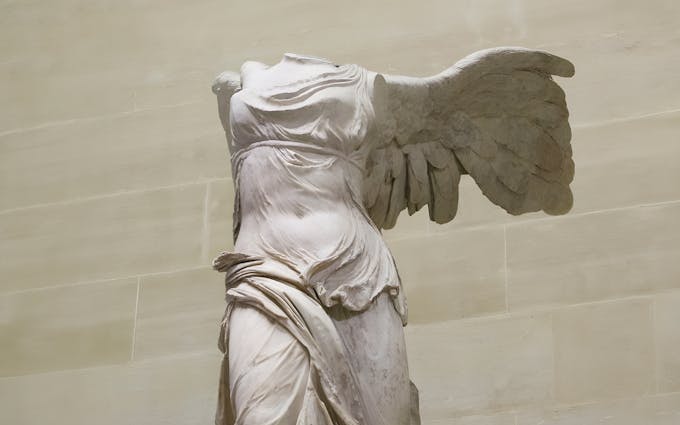
The Winged Victory of Samothrace is truly unforgettable. Positioned majestically at the summit of a grand staircase, this marble masterpiece captures the essence of Nike, the Greek goddess of victory. Crafted in the 2nd century BC, it's no wonder why this statue commands such attention – it's even the inspiration behind a well-known shoe company's name.
"La France, sous les traits de Minerve, protégeant les Arts" depicts France personified as Minerva, the Roman goddess of wisdom and the arts, safeguarding the arts. This allegorical representation symbolizes France's commitment to nurturing culture and creativity, embodying a powerful guardian of artistic expression and cultural heritage.
2Rooms 706, 707 and 708 - Renaissance art
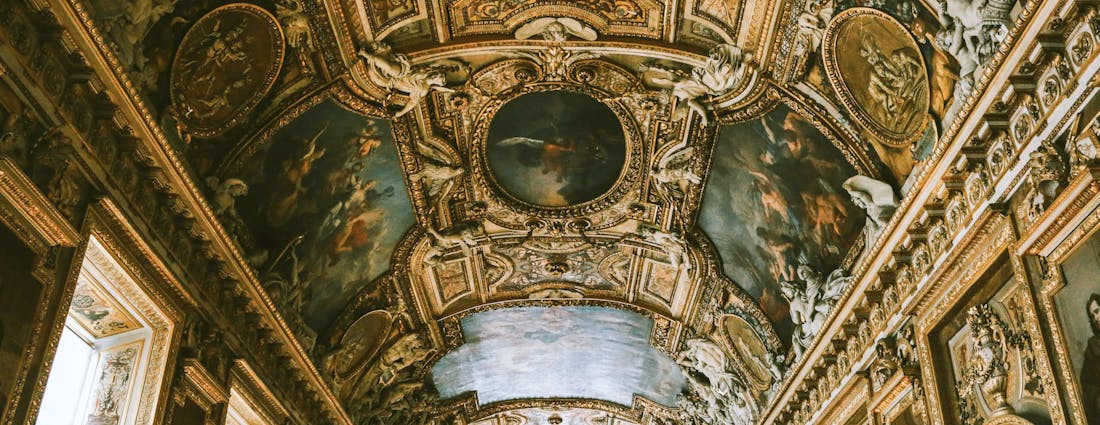
The Renaissance section begins with early Italian paintings, including works by Giotto and others, located in Rooms 706, 707 and 708 of the Denon Wing. Personally, I've always found myself drawn to Giotto's 14th-century masterpiece "La Crucifixion." As you progress chronologically through history, you'll find yourself in another lengthy hallway leading to Room 711, where you'll encounter the brilliance of Leonardo da Vinci.
3Corridor 710, 712 and 716 - The Grande Galerie
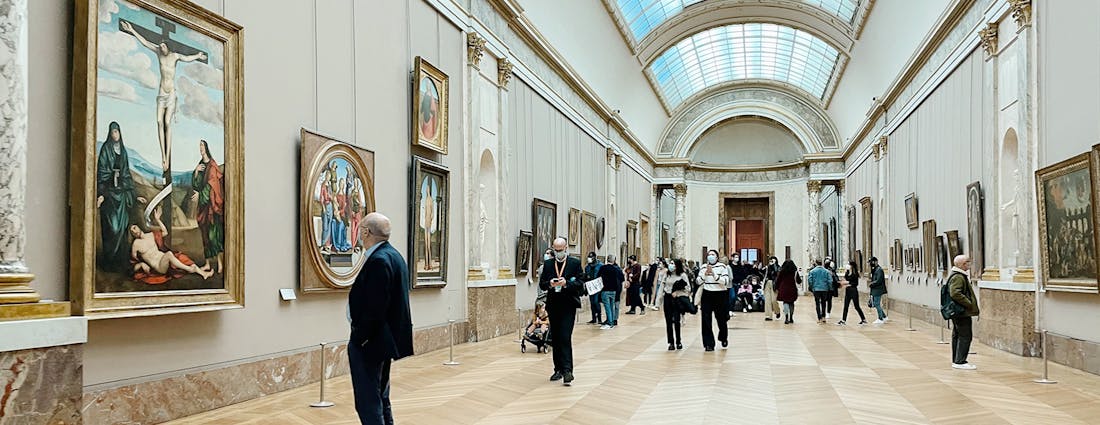
Walk through the Grand Gallery. On your immediate right, you'll find International Gothic and Early Renaissance art – feel free to skip it if it doesn't interest you. However, don't miss the three Giotto's on your left, as they mark the beginning of Renaissance painting. Continue onwards until you reach the Mona Lisa room, which, in my opinion, is one of the highlights of the museum. After passing the Mona Lisa room, explore The Raphael's, and pause when you encounter The Voltera; David Slaying Goliath in the center. I suggest you fully finish exploring the grand gallery before coming back to the Mona Lisa in Room 711.
4Room 711 - The Mona Lisa and more
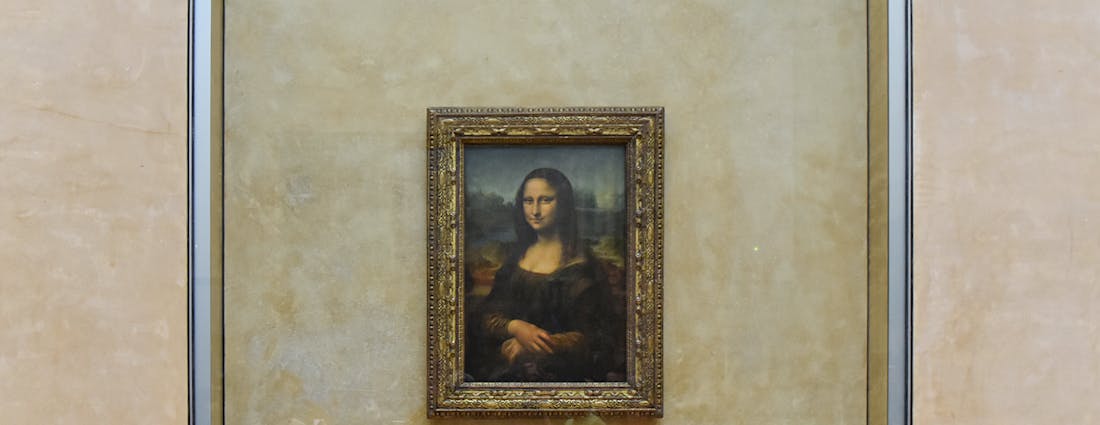
Before joining the crowds around the famous painting, check out Leonardo da Vinci's other artworks on the left wall. They're right across from the entrance to the room with the Mona Lisa. Take a moment to admire his distinctive smokey style, known as sfumato. The Mona Lisa, despite its fame and widespread recognition, is actually quite small, measuring just 2 feet 6 inches by 1 foot 9 inches. This oil painting on wood is stunning, with its half-smile and expansive background drawing viewers in. Direct your gaze away from the Mona Lisa to find the "Wedding Feast at Cana" directly opposite. Unlike the Mona Lisa, this painting covers an entire wall and depicts the biblical scene of Jesus turning water into wine with remarkable detail.
5Room 700 - The Red Rooms
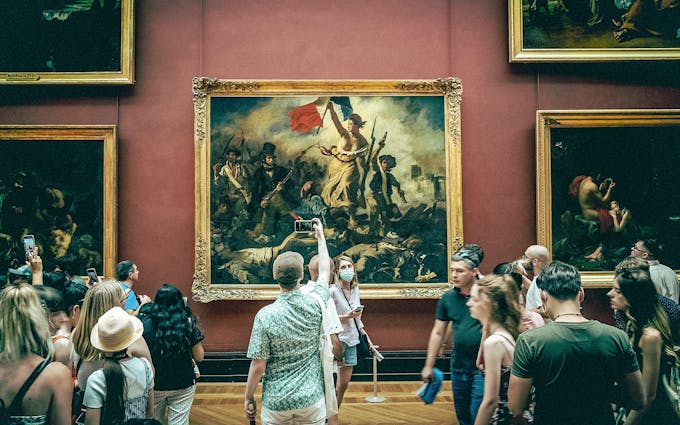
The Red Rooms, named after the color of their walls, house some of the Louvre's largest paintings. Among these are masterpieces by renowned 19th-century French painters, from David to Delacroix. Notable works include The Raft of the Medusa, Coronation of Napoleon, and Liberty Leading the People.
What to see at the Louvre in 3 hours
If you have at least three hours to spare, continue your journey where you left off. Go one floor down from the staircase at the end of The Red Rooms, and make your way to the Sully wing.
6Rooms 345 and 344 - Venus de Milo and other statues
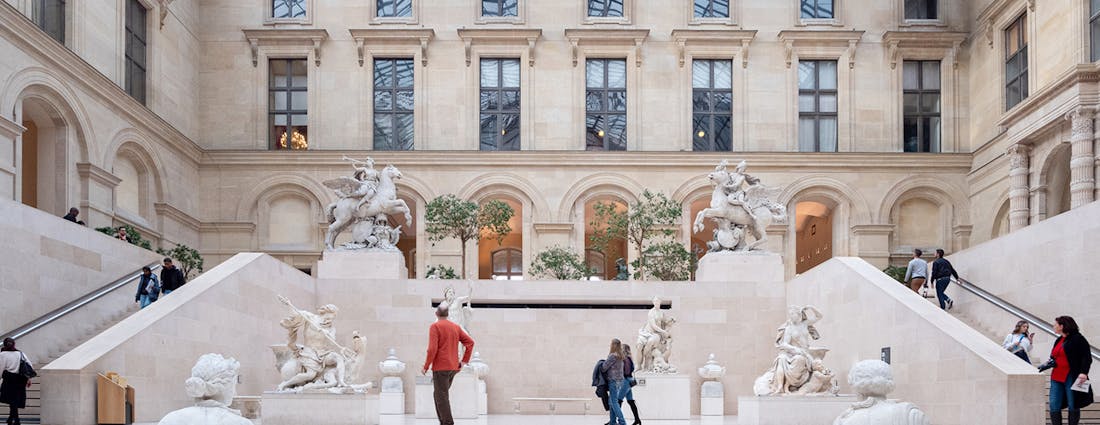
The Louvre's gallery of antiquities, replacing the royal apartments, showcases Greek sculpture masterpieces, including the renowned Venus de Milo. Her grace will surely capture you! Found in 1820 on the Greek island of Melos, she was swiftly acquired by the Marquis de Rivière, then the French ambassador to Greece.
7Rest of the Sully wing

At the Sully wing, explore the extensive Egypt collection, but be prepared – it may take around two hours to cover. If you're fascinated by Egyptian art and relics, this area is a gold mine! Don't miss the Great Sphinx of Tanis, a mysterious creature with the body of a lion and the face of a king. It guards the entrance to the Louvre’s Department of Egyptian Antiquities, where you'll find over 6,000 works spanning nearly 5,000 years of Egyptian history.
Beyond 3 hours at the Louvre
8Richelieu Wing
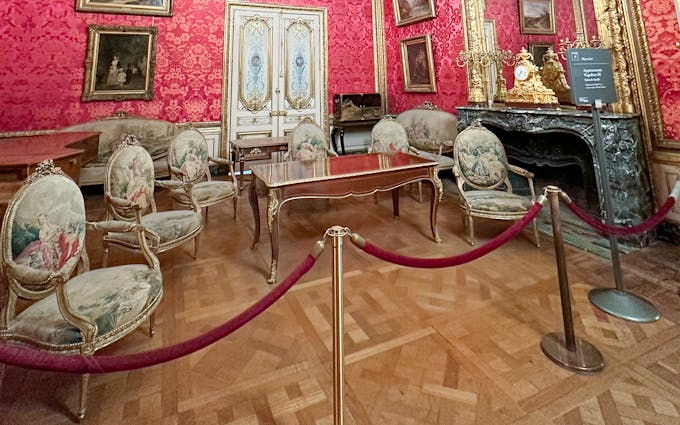
If you have two to three hours at the Louvre, stick to the suggested path. The same applies to the oriental section, featuring Middle Eastern art, and the French decorative art collection, which both require two hours each. For a four-hour visit, head to the Richelieu Wing to admire Northern European artists like Rembrandt, Van Der Weyden, and Vermeer. Beyond four hours, explore Greece, African, Asian, Oceanic, and American art, as well as Islamic Art. And if you have five or more hours, take your time to appreciate the extensive French sculpture collection.
Choosing the best tickets for a short visit


